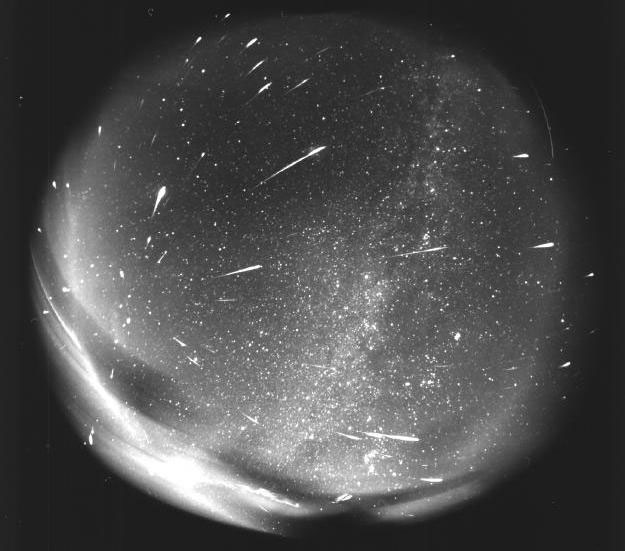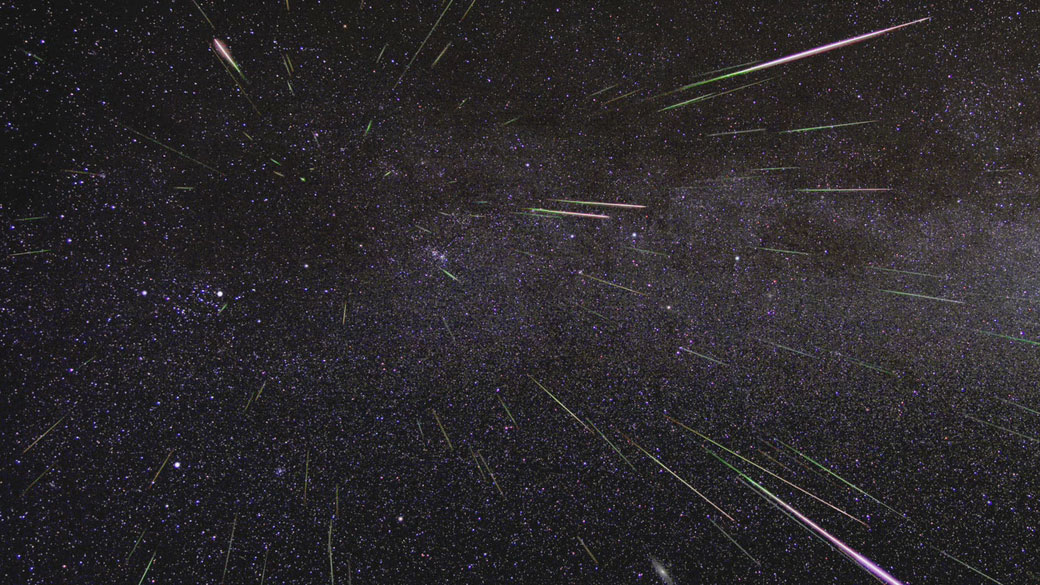TORONTO – In the wee hours of May 24, Canada may be treated to a view of a new meteor shower.

Meteors are small pieces of space dust and debris that burn up about 80 to 120 km above us in Earth’s atmosphere. Meteor showers — of which there are several major ones almost every month — are caused when Earth plows through debris left over from a passing comet.
READ MORE: How to watch the new meteor shower (Hint: Stay up really late)
This year, Earth is expected to pass through the debris from Comet 209/P LINEAR, discovered in 2004, and it could put on quite a show.
Esko Lyytinen of Finland and Peter Jenniskens at NASA Ames Research Center were the first to announce that we could be in for a meteor shower in May 2014.
While early estimates pegged the rate of meteors per hour to be close to 1000, which would be considered a meteor storm, a recent study by Western University researchers Quanzhi Ye and Paul A. Wiegert, of the Department of Physics and Astronomy calculated that it would closer to a more modest 100 to 200.

“It does depend a little bit on how active the comet was in the past,” Wiegert told Global News. “And a lot of the debris that should arrive at the Earth would have been produced a few hundred years ago, maybe, and we don’t have good observations of the comet from then, so we don’t know how much dust it was producing.”
Jenniskens, a meteor astronomer for SETI and NASA’s Ames Research Center told Global News that it’s a guessing game.
“Where we are at this moment, it’s a mystery,” he said. “There’s just no way of telling. Because it all depends on whether this comet was active in the period of time that puts the dust in Earth’s path.”
READ MORE: Experts confirm fireball over Toronto, eastern Ontario was meteor
Western University is equipped with radar that will be able to pierce through clouds, if the weather doesn’t hold up.
To put things in perspective, two of the most impressive meteor showers are the Perseids, which take place in August, and the Leonids, which take place in November. From a dark-sky location, the Perseids produce an average of about 50 to 75 meteors per hour, while the Leonids are closer to about 100 meteors per hour. If this new meteor shower — dubbed the Camelopardalids — comes to be,and is as large as predicted, this could be magnificent. (Meteor shower names are based on the constellation they appear to be coming from in the sky.)
Other researchers who believe the meteor count will be much higher than 200 per hour. Russian meteor expert Mikhail Maslov and Jérémie Vaubaillon of the Institut de Mecanique Celeste et de Calcul des Ephemerides (IMCCE) in France believe it will be closer to 400 per hour.
Either way, the great thing is that Canada is the prime viewing location. The radiant, or the area in the sky where the meteors appear to be coming from, is in the constellation Camelopardalis, not far from the north celestial pole and we will be in darkness most of the night. We are in such a great location, Weigert said, that astronomers from Europe are expected to descend on Canada to observe the potential shower.
The meteor shower is expected to peak between 7:00 a.m. and 8:00 a.m. UTC (12 a.m. and 1 a.m. in Vancouver, 3 a.m. and 4 a.m. in Toronto, 4 a.m. and 5 a.m. in Halifax), and the moon will only be a few days from new, so even after it rises during the peak, it won’t interfere with the dark sky very much. Compared to other meteor showers the window to see them is very narrow, so if you’re hoping to catch them, it’s best to set up an hour or two before the peak.
“You want to set yourself up just at the beginning of the shower, and then get comfortable, wrap yourself up in blankets and enjoy the sky for a while,” Jenniskens said.
And even if it isn’t a meteor storm, Weigert and Yu did conclude that the meteors that are produced will likely provide us with bright meteors.
“This comet seems to be delivering larger rocks. Not giant boulder, Russian fireball kinds of rocks…but bigger than the average. So the ones that we do see, we do expect to be brighter than typical,” Weigert said.
READ MORE: Western University researchers find asteroids like Russian event more likely than believed
So why is this the first meteor shower from this comet? Weigert said that it’s likely because the comet wasn’t that active, seeing as it wasn’t discovered until 2004. And if we do see a meteor shower, there’s no guarantee that we can expect a regular Camelopardalids shower year after year.
If you want to see it, the best location is a dark-sky location away from city lights.
“There could well be a meteor shower, probably not a storm, but exactly how strong it will be, we’ll have to wait and see,” Weigert said.
“I’m planning go and try to see it,” he said. “Because I’m excited enough about this that I think something could happen, but if nothing happens, well, you know, sometimes that’s the way it goes.”
Jenniskens encourages people to go out and see the shower, but not to expect too much. But no matter what, the potential meteor shower provides an opportunity to enjoy the night sky.
“You don’t want to miss this,” he said. “But if you were to be able to just see a few of these meteors…you’d be the first person to see these.”




Comments